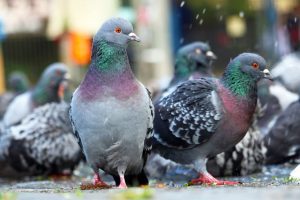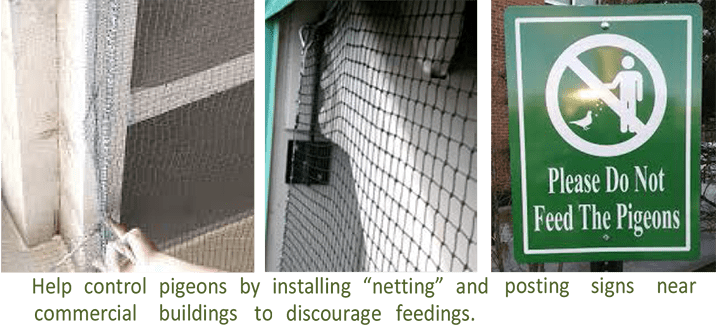Identification and Life Cycle
The pigeon or “rock dove” (Columba livia Gmelin), is a common, serious urban bird pest. They are not only a great nuisance, but can transmit diseases, contaminate foods and cause damage to structures.
The pigeon’s body color can vary from gray to white, tan and black. It has two black bars on the secondary wing feathers, a broad black band on the tail and red feet.
Nesting sites are frequently located in protected areas up high on structures. A pigeon’s nest is different than other bird nests. It consists of twigs, sticks, and grasses clumped together to form a platform. A pigeon reuses its nest many times, and does not remove its feces the way many birds do. Over time, the nest grows into a sturdy mound, sometimes including unhatched eggs and deseased nestlings.
Bird mites will live on birds and in their nests until the host (food source) dies or abandons the nest. Up to thousands of mites will then migrate to find a new food source. A mite’s bite on a human can be painful, and cause itching and dermatitis. It is sometimes described as a sensation of “crawling” on the skin, or to some people there can be no skin irritation at all.
Pigeons have one mate at a time, and the male cares and guards the female and the nest. Eight to twelve days after mating, the female lays one or two eggs. The eggs hatch about eighteen day later. After, the young feed on a secreted substance called “pigeon milk”. The young birds then leave the nest when they are four to six years of age. The female will lay more eggs, typically in the spring and fall months. The average life of a wild pigeon is 15 years or longer.




Comments are closed.